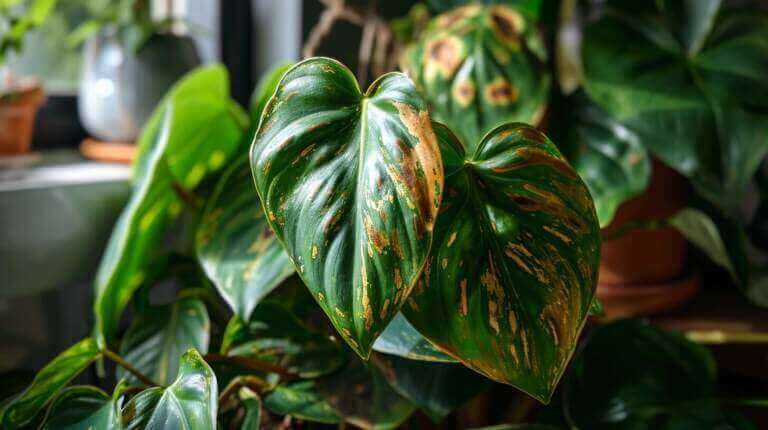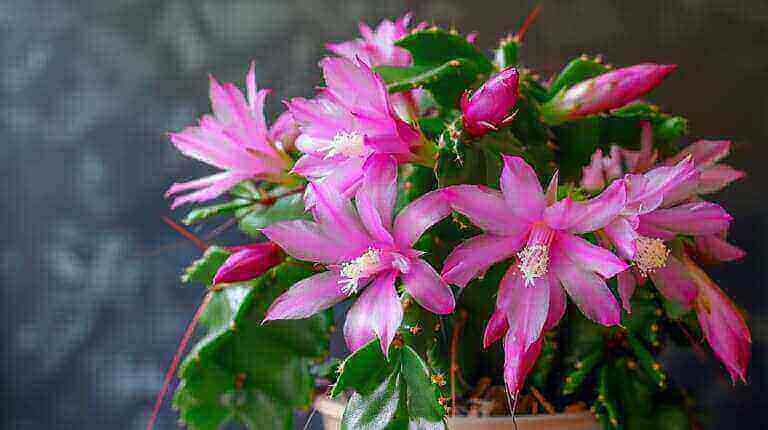Are your Chinese Evergreen leaves mysteriously turning yellow? If so, you’re not alone. This article will unravel the common causes behind this issue and provide practical solutions to restore your plant’s health.
From overwatering and poor drainage to inadequate light and nutrient deficiencies, we’ll explore the factors that may be affecting your Chinese Evergreen.
Stay tuned to learn how to diagnose and treat potential pest infestations and diseases.
Get ready to revive the vibrancy of your cherished plant!
Key Takeaways
- Regular watering and striking a balance is important to prevent yellowing leaves.
- Proper care and attention to watering and temperature conditions is important.
- Proper drainage is essential to prevent waterlogged soil and root rot.
- Chinese Evergreen plants require bright, indirect light and moderate to high humidity levels.
Common Reasons Why Your Chinese Evergreen Leaves Turn Yellow
One of the most common causes of yellowing leaves in Chinese Evergreen plants is inadequate watering. Chinese Evergreen plants require regular watering, but it is important to strike a balance. Too much water can lead to overwatering and poor drainage issues, which will be discussed in the subsequent section. On the other hand, insufficient watering can cause the leaves to turn yellow and wilt. It is essential to keep the soil moist but not soggy.
Over-fertilization problems and improper temperature conditions can also contribute to this issue. Chinese Evergreen plants are sensitive to extreme temperature fluctuations. Exposure to cold drafts or hot temperatures can stress the plant and lead to yellowing leaves.
Proper care and attention to watering and temperature conditions will help prevent yellowing leaves in Chinese Evergreen plants.
Overwatering and Poor Drainage Issues
Frequently, overwatering and poor drainage can lead to yellowing leaves in Chinese Evergreen plants. It is important to understand the watering needs of these plants to avoid this issue. Here are three key points to consider:
- Watering frequency: Chinese Evergreen plants prefer to be kept slightly moist, but not overly wet. Watering should be done when the top inch of soil feels dry to the touch. Avoid watering too frequently, as it can lead to waterlogged soil and root rot.
- Proper drainage: Ensure that your Chinese Evergreen plant is potted in a container with drainage holes. This allows excess water to escape and prevents water from pooling at the bottom of the pot. Use well-draining soil mix to further improve drainage.
- Root rot prevention: Overwatering and poor drainage can promote the growth of harmful fungi and bacteria, leading to root rot. To prevent this, always empty the saucer or tray underneath the pot after watering to remove any standing water.
Insufficient Light and Low Humidity
Insufficient light and low humidity can both contribute to the yellowing of Chinese Evergreen leaves. These factors directly affect the plant’s ability to carry out photosynthesis and maintain healthy growth.
Chinese Evergreen plants require bright, indirect light to thrive. Placing them in a dimly lit area or far away from windows can result in insufficient light, leading to yellowing leaves.
Low humidity levels can also be detrimental to the plant’s health. Chinese Evergreens prefer moderate to high humidity, and when exposed to low humidity environments, their leaves can start to turn yellow.
Additionally, improper watering techniques and temperature fluctuations can exacerbate the effects of low light and humidity.
It is important to provide adequate light and maintain proper humidity levels to prevent yellowing leaves in Chinese Evergreen plants.
Nutrient Deficiencies and Imbalances
Several nutrient deficiencies and imbalances can cause the leaves of Chinese Evergreen plants to turn yellow. Ensuring proper plant care and conducting soil testing can help identify and address these issues. Here are three common nutrient deficiencies and imbalances that can lead to yellowing leaves:
- Nitrogen deficiency: Lack of nitrogen can result in pale yellow leaves and stunted growth. To remedy this, apply a balanced fertilizer with a higher nitrogen content to promote healthy leaf development.
- Iron deficiency: Insufficient iron can cause yellowing between the veins of the leaves. Adding iron chelates or iron-rich fertilizers can help address this deficiency and restore the plant’s vibrant green color.
- pH imbalance: Chinese Evergreens prefer slightly acidic to neutral soil. If the soil pH is too high or too low, it can hinder nutrient uptake and lead to yellowing leaves. Conduct a soil test to determine the pH level and adjust it accordingly.
By addressing these nutrient deficiencies and imbalances through proper plant care and soil testing, you can prevent yellowing leaves and ensure the optimal health of your Chinese Evergreen.
Now, let’s move on to the next section: pest infestations and diseases.
Pest Infestations and Houseplant Diseases
Pest infestations and diseases can pose significant threats to the health and vitality of Chinese Evergreen plants. It is important for plant owners to be aware of common pests and diseases that can affect their Chinese Evergreen and take appropriate measures to prevent and treat them.
One common pest that can infest Chinese Evergreen plants is spider mites. These tiny insects can cause yellowing leaves and webbing on the plant. To prevent spider mite infestations, it is essential to maintain proper plant care, including regular dusting of leaves and keeping the humidity levels high.
Another common disease that can affect Chinese Evergreen is root rot, typically caused by overwatering. To prevent root rot, it is crucial to practice proper watering techniques, allowing the soil to dry out slightly between waterings.
Regularly inspecting the plant for any signs of pests or diseases and taking immediate action can help ensure the health and longevity of Chinese Evergreen plants.
Frequently Asked Questions
Can I Use Tap Water to Water My Chinese Evergreen Plant?
Tap water can be used to water Chinese Evergreen plants, but it is important to consider its effects. Tap water may contain chemicals such as chlorine or fluoride, which can be harmful to the plant’s health.
To mitigate these effects, it is recommended to let the tap water sit for 24 hours before using it, allowing the chlorine to dissipate. Alternatively, using filtered or distilled water can provide a healthier option for your Chinese Evergreen plant.
How Often Should I Fertilize My Chinese Evergreen Plant?
Fertilizing frequency is an important aspect of maintaining the health of Chinese evergreen plants. These plants typically require fertilization every 2-4 months during the growing season, which is typically spring and summer.
It is crucial to choose a balanced fertilizer that provides essential nutrients like nitrogen, phosphorus, and potassium. Common nutrient deficiencies in Chinese evergreen plants include nitrogen and iron deficiencies, which can lead to yellowing of leaves.
Regular and timely fertilization can help prevent such deficiencies and promote healthy growth.
Is It Normal for Chinese Evergreen Leaves to Turn Yellow During Winter?
During the winter season, it is not uncommon for Chinese evergreen leaves to turn yellow. This can be caused by several factors, including changes in temperature and humidity levels, reduced sunlight exposure, and overwatering.
To prevent and treat yellowing leaves, it is important to maintain consistent temperature and humidity levels, provide adequate sunlight, and avoid overwatering. Additionally, ensuring proper drainage and using well-draining soil can help prevent waterlogged conditions that can lead to yellowing leaves.
Are Yellow Leaves and Brown Tips on Chinese Evergreen Leaves Related?
Yes, neem oil can be used to treat pest infestations on Chinese evergreen plants. It is an effective and natural solution that can help eliminate pests such as aphids, mealybugs, and spider mites.
However, it is important to follow the instructions on the product label and use it sparingly to avoid any potential damage to the plant.
Alternatively, you can also consider using other methods such as insecticidal soap or manual removal of pests to control infestations on your Chinese evergreen plants.
How Long Does It Take for a Chinese Evergreen Plant to Recover From Nutrient Deficiencies?
Chinese evergreen plants can take varying amounts of time to recover from nutrient deficiencies, depending on the severity of the deficiency and the specific nutrients lacking. However, it is important to prevent nutrient deficiencies in the first place to ensure the plant’s optimal health.
By providing the necessary nutrients through a well-balanced fertilizer and maintaining proper watering and lighting conditions, you can help prevent nutrient deficiencies.
Common signs of nutrient deficiencies in Chinese evergreen plants include yellowing leaves and stunted growth.







